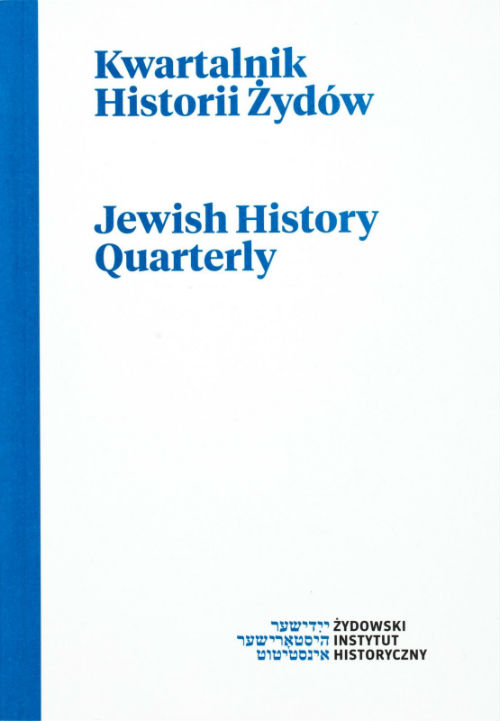Uchwytne archeologicznie elementy żydowskiego obrządku pogrzebowego na ziemiach polskich w XVI-XIX w. Konfrontacja ze źródłami historycznymi
Tangible Archaeological Elements of Jewish Funeral Rites in Polish Lands, 16th-19th Century. Confrontation with Historical Sources
Author(s): Paweł FijałkowskiSubject(s): History
Published by: Żydowski Instytut Historyczny
Keywords: cemeteries; padlocks on graves; popular culture; tombstones; burial rites; afterlife
Summary/Abstract: The article presents the findings of archaeological excavations in Jewish cemeteries in Dobrzyń nad Wisłą, Krasiczyn, Lublin, Lutomiersk, Maków Mazowiecki, Połaniec, Śrem and Wyszogród. These studies and accidental discoveries made at other necropolises have supplied a lot of information about Jewish burial rites, visions of death and afterlife and the operation of Jewish cemeteries in Polish lands from the 16th to the 19th century. It was determined that the dead were buried in a wooden casing (which was connected with faith in resurrection in a literal sense), face up, with the arms along the body and the legs straight. The corpse was usually buried along the west-east axis (with the head to the west), NWW-SEE (head to NWW) or NW-SE (head to NW). This means that the dead had their faces toward the east of south-east, i.e., toward the Promised Land, where after resurrection all souls were to come when summoned by Moses. They had their eyes and mouth covered by bits of clay vessels, which were to protect the dead from mundane desires. Padlocks were placed in some graves, symbolizing the closing of the lips of the dead person or the closing of the grave for eternity. Both customs were an expression of a desire to isolate the dead from the world of the living. Very rarely, coins would be placed in the graves, presumably as amulets. Cemeteries were typically located several hundred metres away from the town. The perimeter was often surrounded by a dike and an earth wall, sometimes a row of boulders. The graves were usually arranged in rows, which would occasionally overlap. Quite often one burial damaged another. This indicates that part of the graves were marked on the surface in a short-lived manner (wooden plaques instead of stone). When no more room was left for fresh burials, the cemetery was covered with a layer of soil and burials continued. Many of the rituals performed at the Jewish cemeteries had nothing to do with orthodox Judaic faith, while at the same time referring to age-old customs shared by many ancient cultures. The popular tradition of nations living side by side with another nation, with reciprocal influences over the centuries, preserved almost until the middle of the 20th century many such ancient elements transgressing the formal framework of Jewish or Christian religious life.
Journal: Kwartalnik Historii Żydów
- Issue Year: 249/2014
- Issue No: 01
- Page Range: 60-98
- Page Count: 39
- Language: Polish

